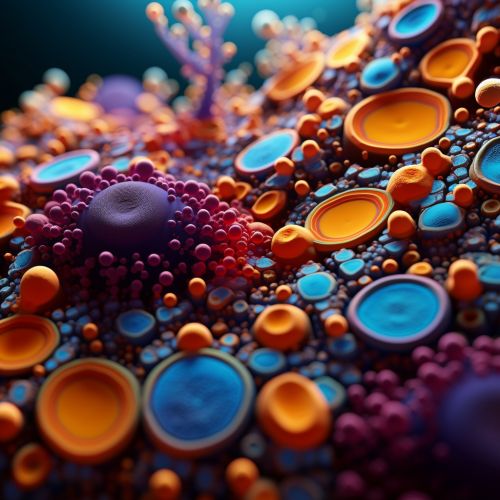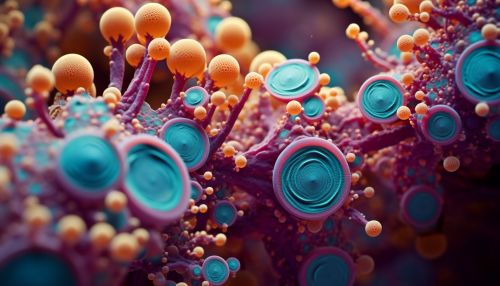Bacterial metabolism
Introduction
Bacterial metabolism refers to the sum of all chemical reactions that occur within a bacterial cell. These reactions are necessary for the growth, reproduction, and maintenance of cellular structures in bacteria. Bacterial metabolism is a complex process that involves the breakdown of nutrients, the production of energy, and the synthesis of cellular components.


Types of Bacteria Based on Metabolism
Bacteria are classified into different types based on their metabolic characteristics. These include:
- Autotrophic bacteria: These bacteria are capable of synthesizing their own food from inorganic substances using light or chemical energy.
- Heterotrophic bacteria: These bacteria obtain their energy by consuming organic matter.
- Phototrophic bacteria: These bacteria derive their energy from sunlight.
- Chemotrophic bacteria: These bacteria derive their energy from chemical reactions.
Nutrient Acquisition
Bacteria acquire nutrients from their environment to support their metabolic processes. These nutrients include carbon, nitrogen, sulfur, phosphorus, and various trace elements. The mechanisms of nutrient acquisition in bacteria are diverse and include passive diffusion, facilitated diffusion, and active transport.
Energy Production
Bacteria produce energy through various metabolic pathways. These include:
- Glycolysis: This is the process of breaking down glucose to produce energy.
- Krebs cycle: This is a series of chemical reactions used by all aerobic organisms to generate energy.
- Electron transport chain: This is a series of complexes that transfer electrons from electron donors to electron acceptors via redox reactions.
Biosynthesis
Biosynthesis refers to the process by which bacteria produce complex molecules from simpler ones. This process is essential for the growth and reproduction of bacteria. Biosynthesis in bacteria involves the production of amino acids, nucleotides, lipids, and carbohydrates.
Regulation of Metabolic Processes
Bacteria regulate their metabolic processes in response to changes in their environment. This regulation is achieved through various mechanisms, including enzyme regulation, gene regulation, and signal transduction pathways.
Metabolic Diversity
Bacteria exhibit a wide range of metabolic diversity. This diversity allows them to inhabit a wide range of environments, from the human gut to the deepest parts of the ocean. Metabolic diversity in bacteria is driven by genetic diversity and environmental factors.
Impact on Humans and the Environment
Bacterial metabolism has a significant impact on humans and the environment. For example, bacteria play a crucial role in the cycling of nutrients in the environment. They also play a key role in human health and disease.
